What Do Mechanics Use to Get Under Cars
20 Essential Tools No Car Mechanic Should Be Without
Car mechanics reveal the 20 automotive tools they couldn't live without, including a battery-powered impact wrench, an air ratchet, a bolt spinner and an automotive stethoscope.
1 / 21
 Photo: Shutterstock
Photo: Shutterstock
The car mechanic tools you need in your toolbox
Doing your own car repairs saves a boatload of money and gives you bragging rights on Monday morning. (Yeah, I replaced my crankshaft over the weekend-so what?) But let's be honest here—you're really in it for the tools, right? That's what I thought, so I asked three shop owners, our auto mechanic field editors and my gearhead friends to tell you about their favourite tools. I've also added all the special tools I wish I'd had when I first started bustin' bolts (and knuckles). Most are less than $100. And you can use them for non-automotive projects too. There, isn't that all the justification you need to buy more tools?
ⓘ
2 / 21
 Photo: Shutterstock
Photo: Shutterstock
Impact wrench
David Marofsky and his auto salvage yard crew spend most of their time out in the yard yanking major components out of junk vehicles. So it's no surprise that his tool of choice is a portable impact wrench. What does surprise me is that all the professional mechanics featured in this story routinely use battery-powered impact wrenches—and not just when they're outside. In fact, David owns several of these workhorses and always keeps one near the hoist. "It hasn't let me down yet," he says. If you're ready for power on the go and in the shop, check out a battery-powered impact wrench.
Check out the crazy things car mechanics have seen on the job.
3 / 21
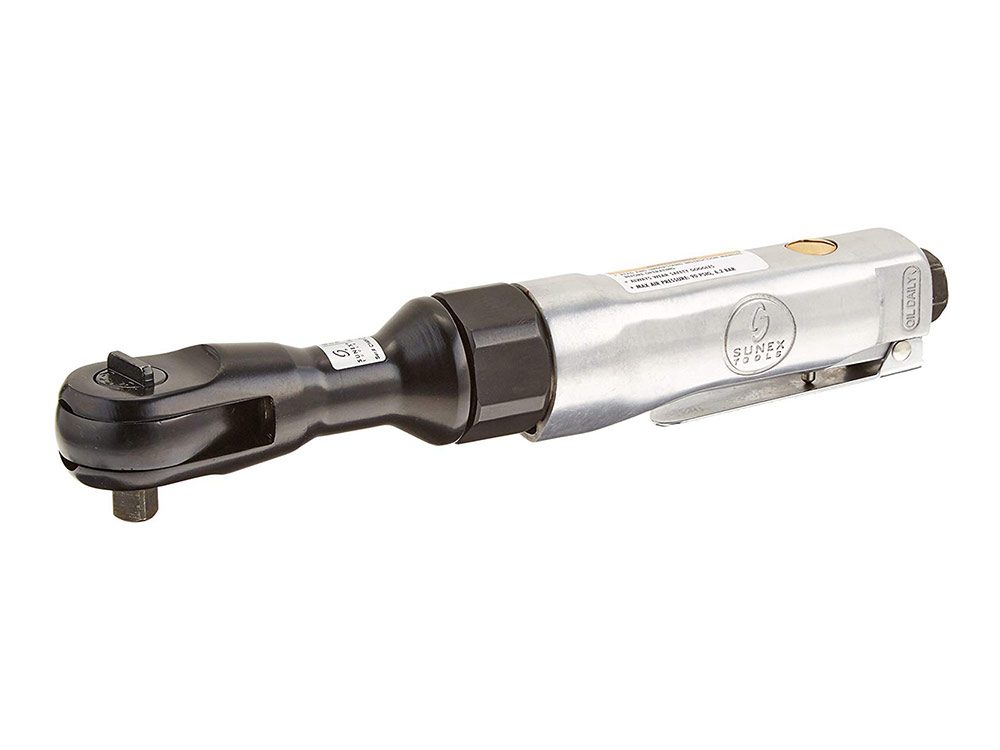 Photo: Amazon.ca
Photo: Amazon.ca
Air ratchet
Kurt Spohn owns Action Auto Repair in Minneapolis and shares our love of tools, so it's no surprise that he recommends an air ratchet. Word to the wise: Be careful when reinstalling nuts and bolts. Make sure the threads are fully engaged before you hit the trigger. Because if they're not, this ratchet is powerful enough to ram a cross-threaded bolt all the way home.
Learn thereasons why your car won't start.
4 / 21
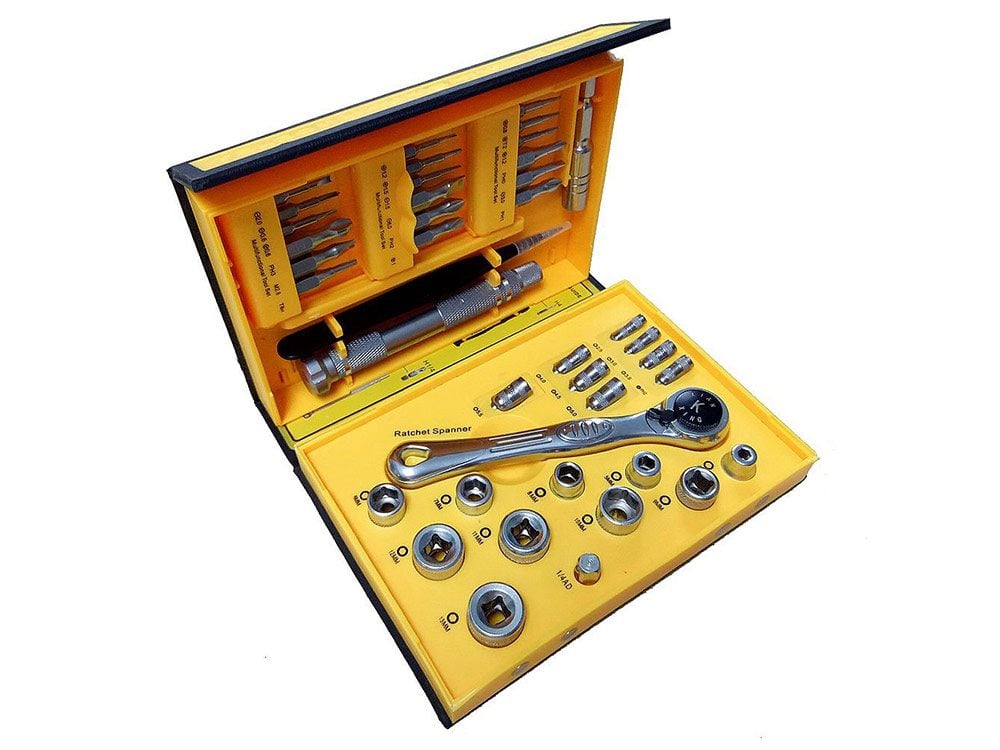 Photo: Amazon.ca
Photo: Amazon.ca
Flex-head ratchet
Paul Selbitschka owns a Precision Tune Auto Care shop that specializes in auto diagnostics and spends quite a bit of time under the hood doing tune-ups and computer diagnostics. Since I already had nominations for power tools, I asked him for his favourite hand tool. He didn't hesitate for a second. He simply loves his flex-head ratchet. The ultra-thin head lets Paul squeeze into tight spaces, and the flex feature allows him to pivot the handle to get maximum leverage for loosening fasteners and spark plugs. The large plastic handle lets him put more muscle into the "break." The ratchet really goes to town once the bolt is loose. Paul just twirls the handle 360 degrees and spins the nuts and bolts out in seconds.
Here are 100 morecar maintenance tasks you can do on your own.
5 / 21
 Photo: Amazon.ca
Photo: Amazon.ca
Automotive stethoscope
Every day, customers ask mechanics to find and fix strange vehicle noises. Lazy mechanics just guess at the cause and replace parts until the noise goes away (on your dime, of course). But professional mechanics use a stethoscope. So I wasn't surprised that several field editors picked the automotive stethoscope as their favourite tool. It's an invaluable tool. But it does have one drawback—it can't help you find a noise that occurs only when you're driving. So some mechanics (like me) are jumping on the wireless bandwagon. To find the source of clunks, thumps and whirs, I use a wireless stethoscope.
Some kits come with multiple transmitters and microphone clamps, a receiver, headphones and hook-and-loop straps. Just clamp the microphones to the most likely suspects in the general vicinity of the noise. Then take the vehicle for a spin. Listen to each microphone until you hear the noise. That's your villain.
If you've got an annoying vehicle noise but aren't up for buying one of these kits, find a shop that owns one.
Discover the meaning behind thesecommon car sounds.
6 / 21
 Photo: Amazon.ca
Photo: Amazon.ca
Extension bar
1. Locking extension bars hold on to sockets: It's a drag when you pull your ratchet and extension bar out of a tight spot only to discover that the socket is still stuck on the bolt head. That'll never happen if you use locking extension bars (pictured). Pull back the locking ring, snap on a socket and let go. The socket is locked on and will always come out with the extension bar.
2. Save your back with a 20-inch extension bar: I was leaning over the fender and elbow deep into a tune-up when an old pro suggested this tool. "Saves your back," he said as he handed me a 20-inch extension bar. Now I use it all the time. Just snap your socket onto the end and ratchet away-while standing.
3. Flexible sockets get in tight places: With engine compartments more crowded than ever, I find myself reaching for my flex sockets quite often. They have a much shorter profile than an ordinary socket and universal joint combo. Yeah, they're a bit pricey. But they let you remove and install bolts in really inaccessible places.
We answer the question: are remote car starters bad for your vehicle?
7 / 21
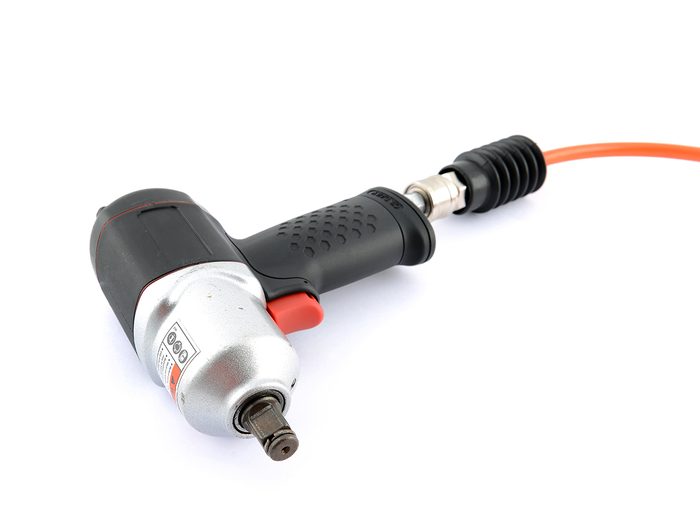 Photo: Shutterstock
Photo: Shutterstock
High torque pneumatic wrench
You can buy an inexpensive impact wrench for less than $100. Just slap on an impact socket and squeeze the trigger. Rusted bolts give up the fight when faced with a whopping amount of reverse torque.
Find out the ways you're shortening the life of your car.
8 / 21
 Photo: Amazon.ca
Photo: Amazon.ca
Vacuum pump
Use the vacuum pump to test your vacuum-controlled sensors and motors. Or find a leaking vacuum line by plugging each one and applying vacuum. If it holds, it's good. You can also use the gauge to find a vacuum leak. Just spray carb cleaner around the possible leak sites. The gauge will flutter if you spray a leaking area. Want to bleed your brakes yourself? Just attach the fluid transfer bottle and vinyl tubing to the pump. Next, use the refill adapters to keep the master cylinder filled while you suck brake fluid out of the bleeder screws. Keep pumping until you see fresh fluid. You can also use the pump to flush power-steering fluids.
Here are seven car fluids to check right now.
9 / 21
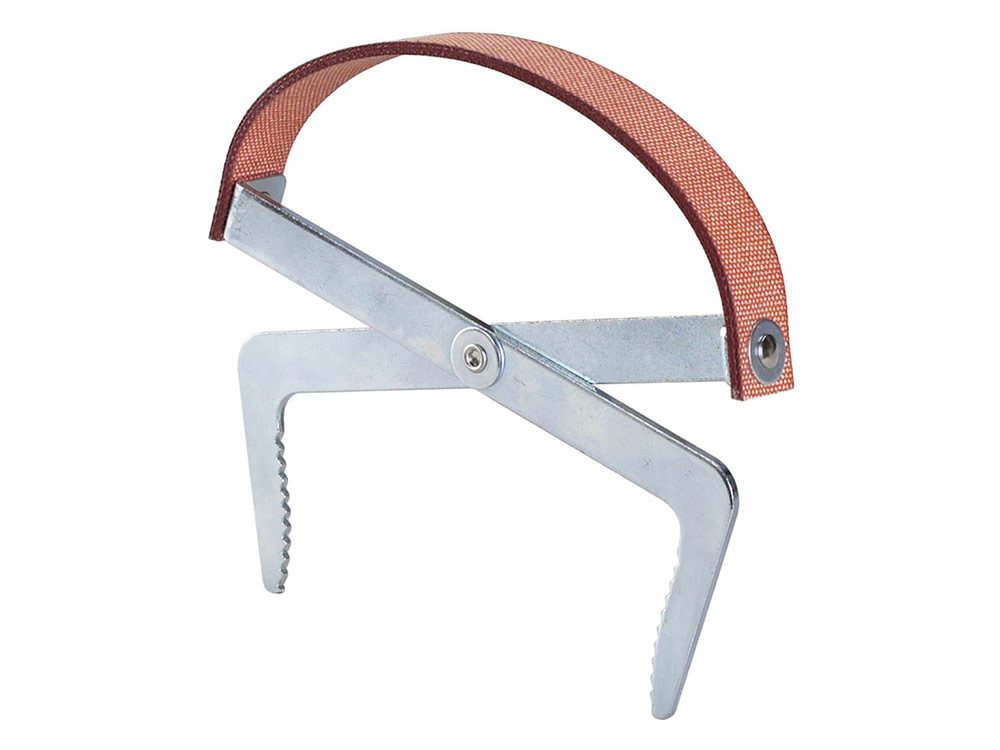 Photo: Amazon.ca
Photo: Amazon.ca
Battery carrier
Old car batteries weigh a tonne, and they're always wedged in tight. The days of wrestling one out with your nice clean hands are over. Just open the jaws of this battery carrier, slap it over the battery, and lift up and out. Now you can carry the battery at your side and away from your clothes. Then use it to load in a new car battery. Your work's done—and your shirt lives to see another day.
Find out how to recharge a dead car battery quickly—and safely.
10 / 21
 Photo: Amazon.ca
Photo: Amazon.ca
Out-of-sight pliers
Okay, so you already own needle-nose pliers. But have you ever noticed how your hand is always in your line of sight when you're trying to grab small things with them? Grab one of these pliers and go after clamps, clips and retainers and still see what you're doing.
Discover the pros and cons of different types of car washes.
11 / 21
 Photo: Amazon.ca
Photo: Amazon.ca
Bent-handle flex ratchet
Ordinary ratchets are short, so you need lots of muscle. But longer ratchets don't fit well under the hood. Flex ratchets are the answer. These suckers let you get into tight places and still get the leverage you need to break bolts.
Improve your driving experience by trying thesecar hacks.
12 / 21
 Photo: Amazon.ca
Photo: Amazon.ca
Ratchet extender
When you're working in areas like engine compartments, sometimes you just can't get your socket into the tight places. That's where theratchet extender comes in handy. Slap your socket onto one end of the extension tool and attach your ratchet to the other end. Then loosen or tighten the "unreachable" bolt.
Learn how to clean inside car windows.
13 / 21
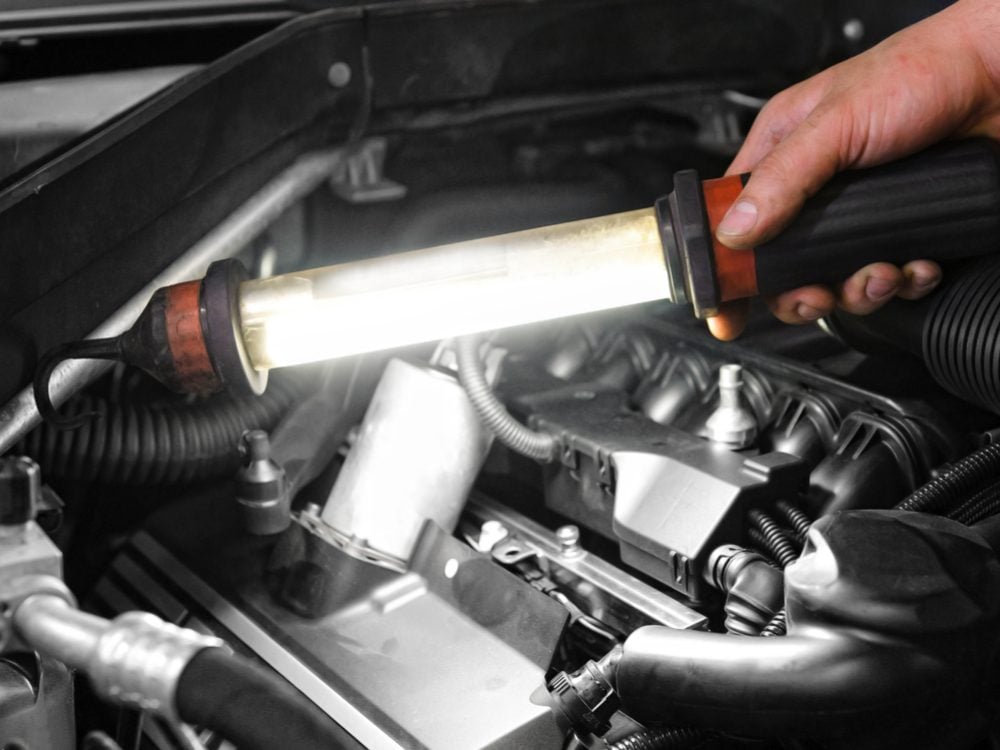 Photo: Shutterstock
Photo: Shutterstock
Hood light
Light up the entire engine compartment with the hood light! Many hood lights fit car and truck hoods from 4-ft. to 6-ft.-6-in. wide.
Keep these overlooked service tasks in mind the next time you change your oil.
14 / 21
 Photo: Amazon.ca
Photo: Amazon.ca
Screwdrivers with hex bolsters
You won't need hex bolsters very often. But when you really need torque, they do the trick. (What's a bolster, you say? It's the place where the shank meets the handle.) Just slide a wrench down the screwdriver shaft and onto the bolster. Then push the screwdriver tip into the screw head and lean into it while you turn the screwdriver with the wrench. Your "lean-in" will keep the screwdriver bit seated in the head, while the wrench gives you added leverage.
Discover how to fix a broken car horn.
15 / 21
 Photo: Amazon.ca
Photo: Amazon.ca
Air tool holder
Air tools don't come with hooks, and they don't nest well in drawers. So plunk down some bucks on this locking air tool holder and your life will be complete. Having second thoughts about that neighbour you entrust with your house key when you're away? Throw your bolt cutters in your suitcase and snap a padlock on the rack. There, it's done.
Your garage will work even harder with these genius storage tricks.
16 / 21
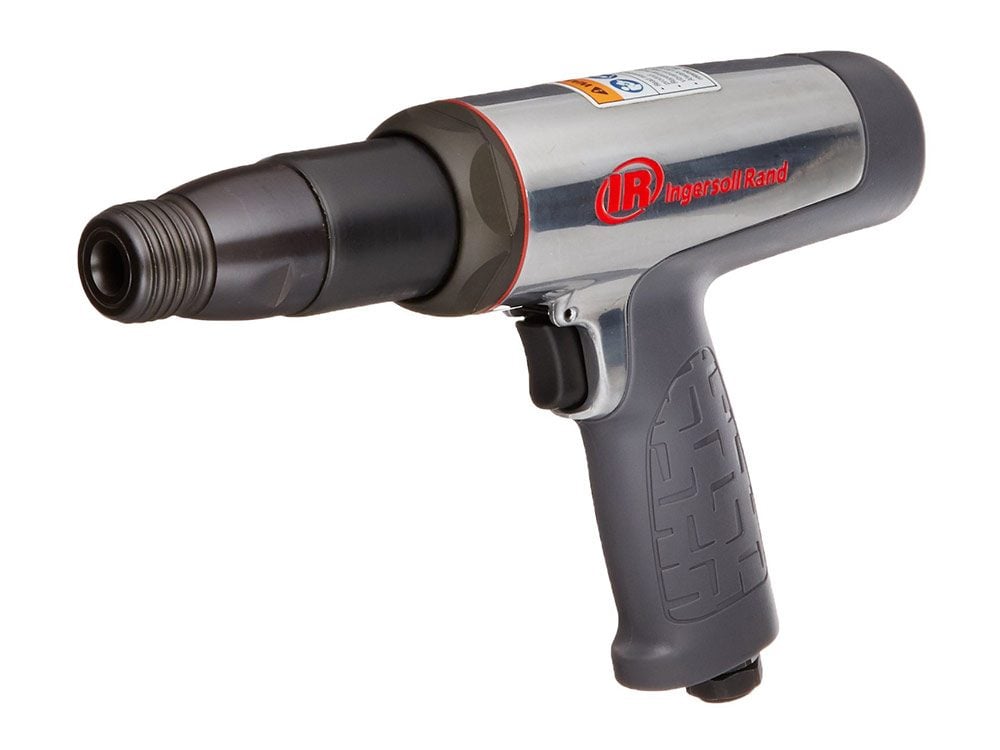 Photo: Amazon.ca
Photo: Amazon.ca
Air hammer with quick-change chuck
If you've ever had to change air hammer bits, you know what a pain it is to mess around with the spring retainer. Forget that.
Here's how to find a car's engine code to help buy the right parts for your car.
17 / 21
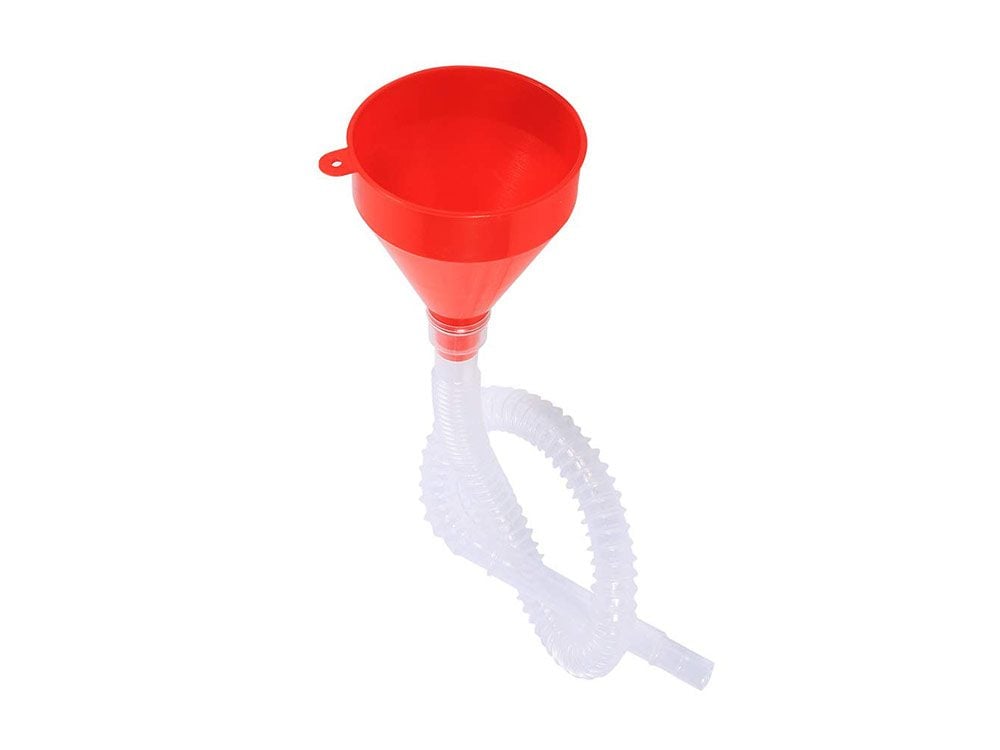 Photo: Amazon.ca
Photo: Amazon.ca
Flexible funnel
If you do your own oil changes, you need aformable funnel. It bends, molds and flexes so you can channel the oil right into your drain pan. But it's not limited to auto repair. You can use it for plumbing repairs too!
Try this simple hack and you'llnever miss another oil change.
18 / 21
 Photo: Amazon.ca
Photo: Amazon.ca
Screw pitch gauge
You've lost a bolt and now you're rummaging through your old bolt collection and trying every one that looks like a contender. It turns in a few threads and then stops. Darn, you're trying to ram an "English" bolt into a metric hole. Stop wasting time and buy an inexpensive screw pitch gauge. Every shop owns one and you should too.
Learn about the five ways to extend the life of your car battery.
19 / 21
 Photo: Amazon.ca
Photo: Amazon.ca
Car picks and locks
Many electrical connectors in late-model vehicles are locked together with plastic pins and slides. Going after them with needle-nose pliers can wreck those "locks." But you can easily finesse them out with one of these picks. They're also good for snatching O-rings and hors d'oeuvres.
Watch out for the signs your car is about to die.
20 / 21
 Photo: Amazon.ca
Photo: Amazon.ca
Finger ratchet for tight places
Carmakers love to install relays and control boxes in deep, dark places under your dash, and there's no way to get big tools in there to loosen the hex-head screws. That's where the finger ratchet comes in handy. If you can get your hand in place, you can get the fastener out. The fine-tooth ratchet mechanism lets you rotate backward to get another "bite," without turning the screw back in. You won't use this tool often, but when you need to, it pays for itself.
This is why your car clicks when starting.
21 / 21
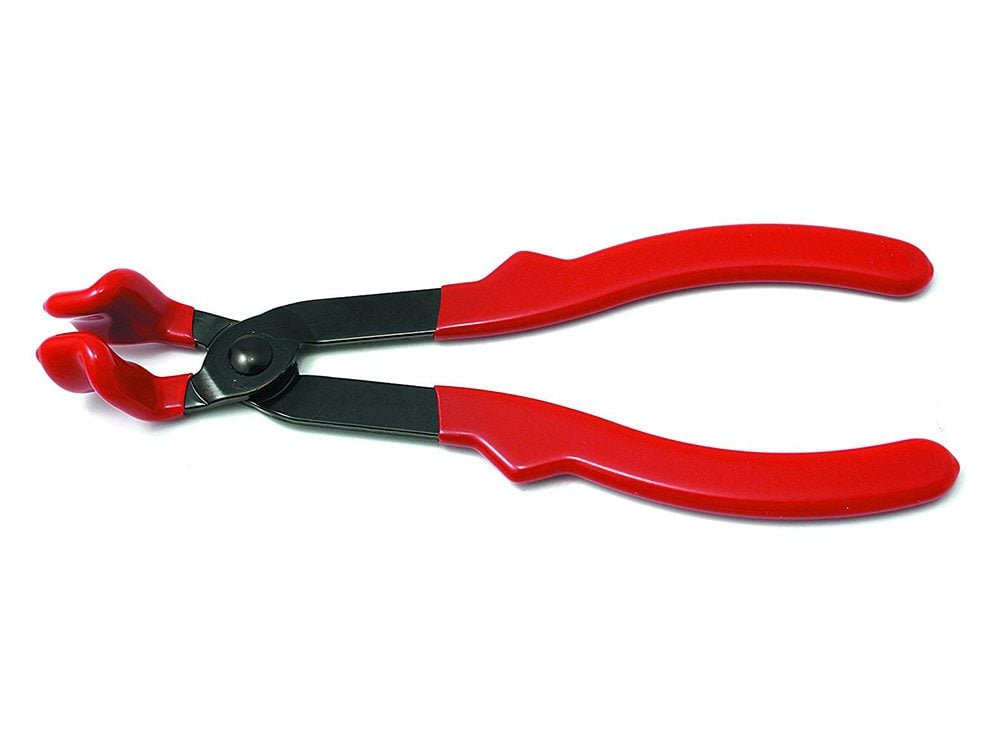 Photo: Amazon.ca
Photo: Amazon.ca
Spark plug pliers
Grab hold of plug wires with pliers and you'll for sure damage the boot. But the padded jaws on plug boot pliers let you get a firm grip on the spark plug boot without tearing it. Slide it onto the top portion of the boot near the wire and clamp down. That'll apply force to the metal clip inside the boot. Then twist and pull. No more torn boots or wires.
Next, find out about the weird car features you didn't know you have.
Originally Published: June 08, 2021
![]()

What Do Mechanics Use to Get Under Cars
Source: https://www.readersdigest.ca/cars/maintenance/top-20-auto-mechanic-tools/
0 Response to "What Do Mechanics Use to Get Under Cars"
Post a Comment